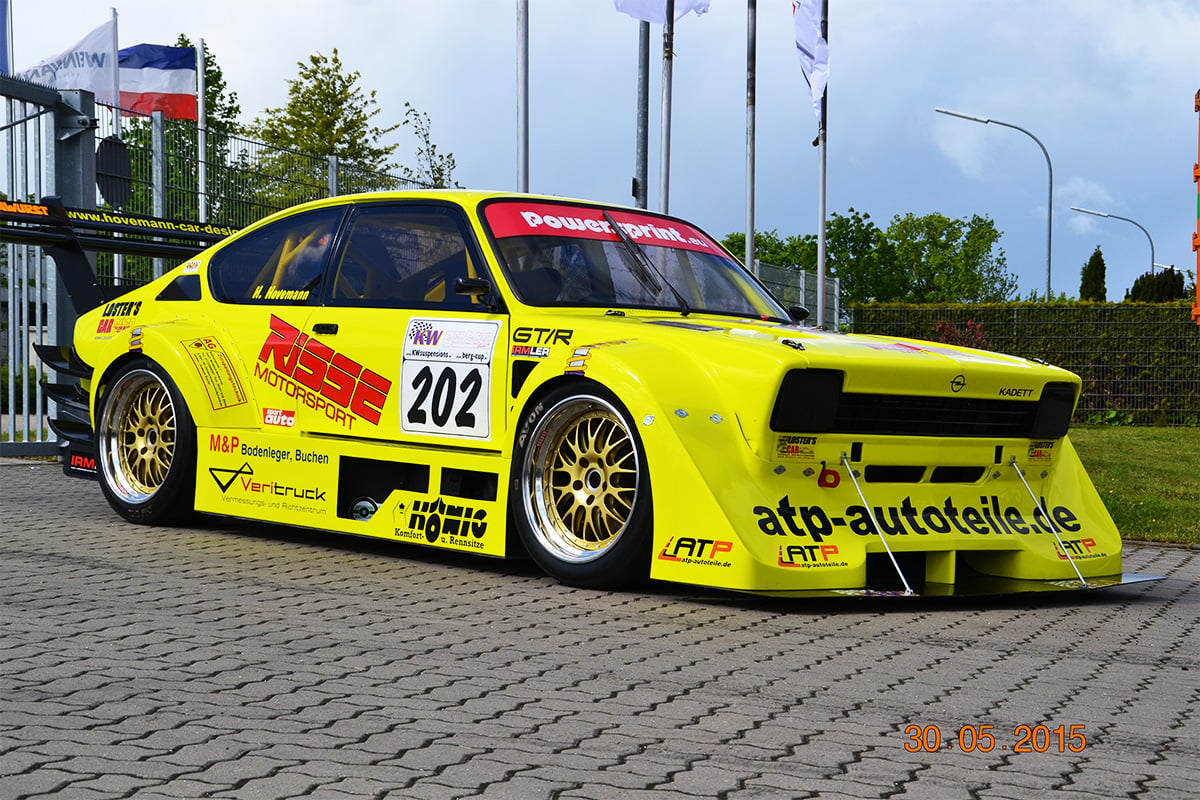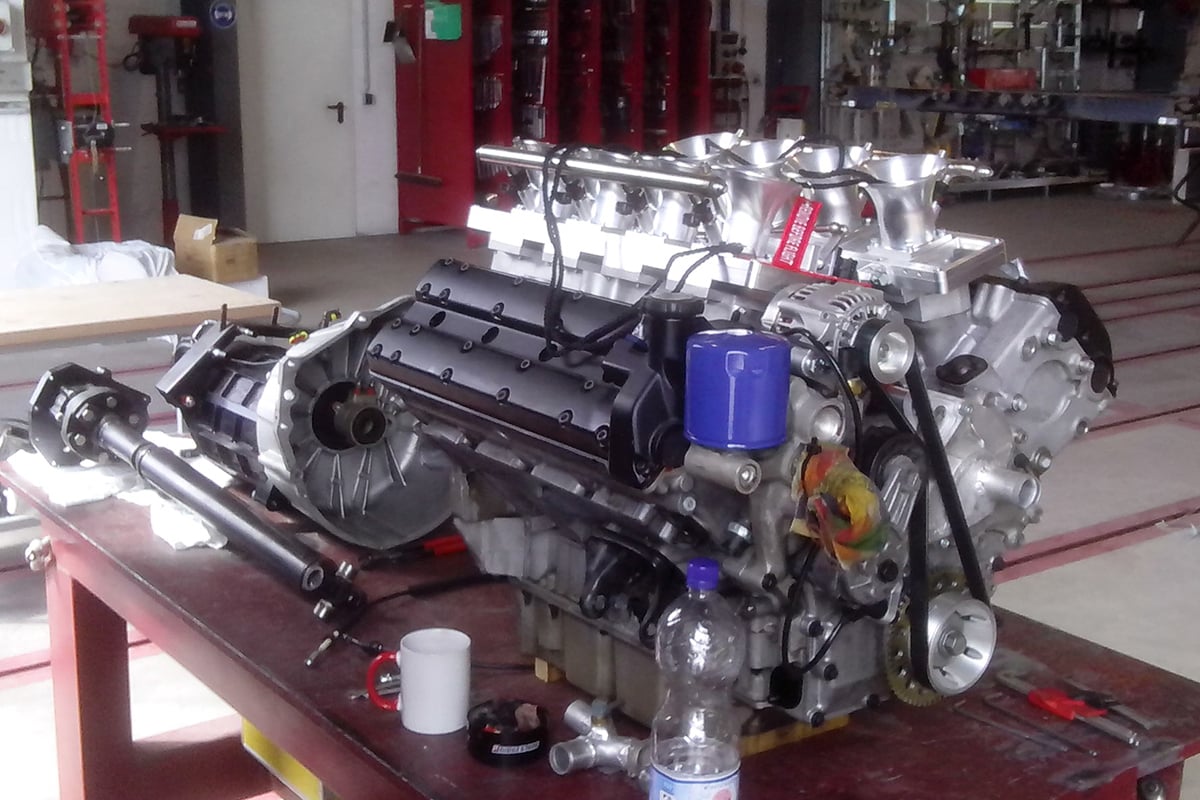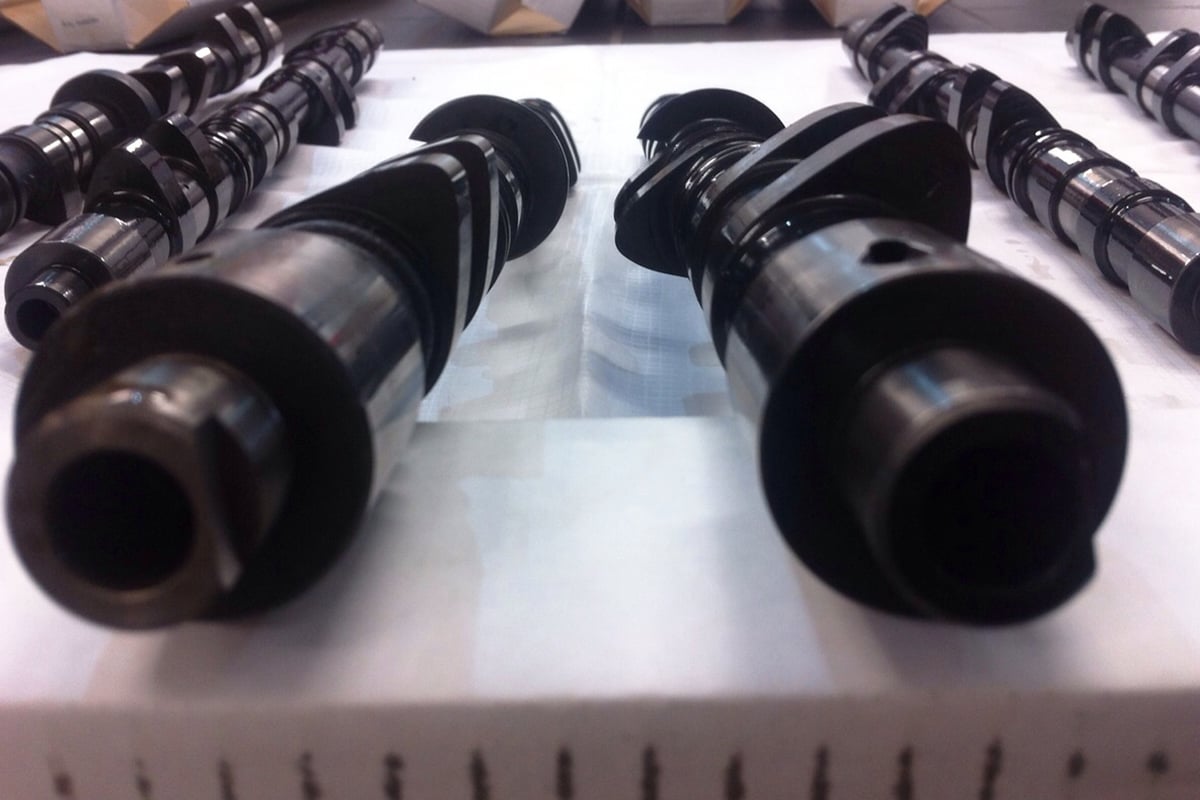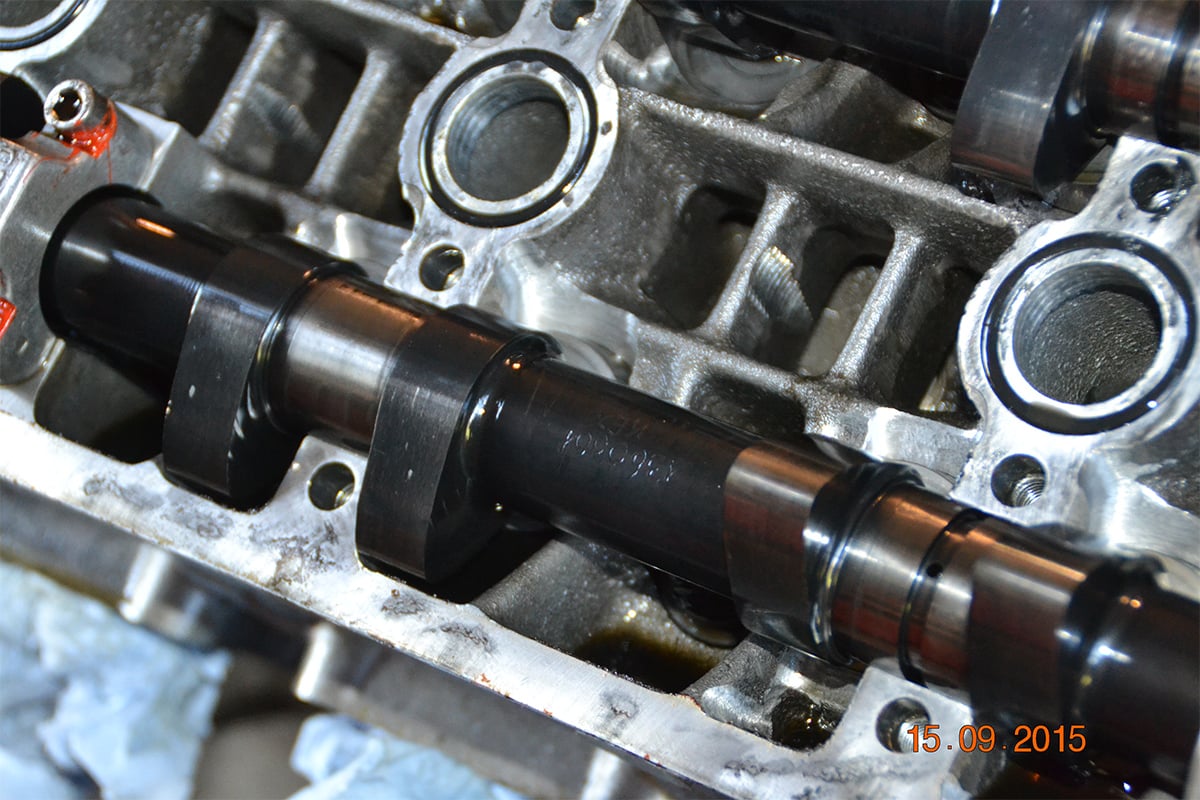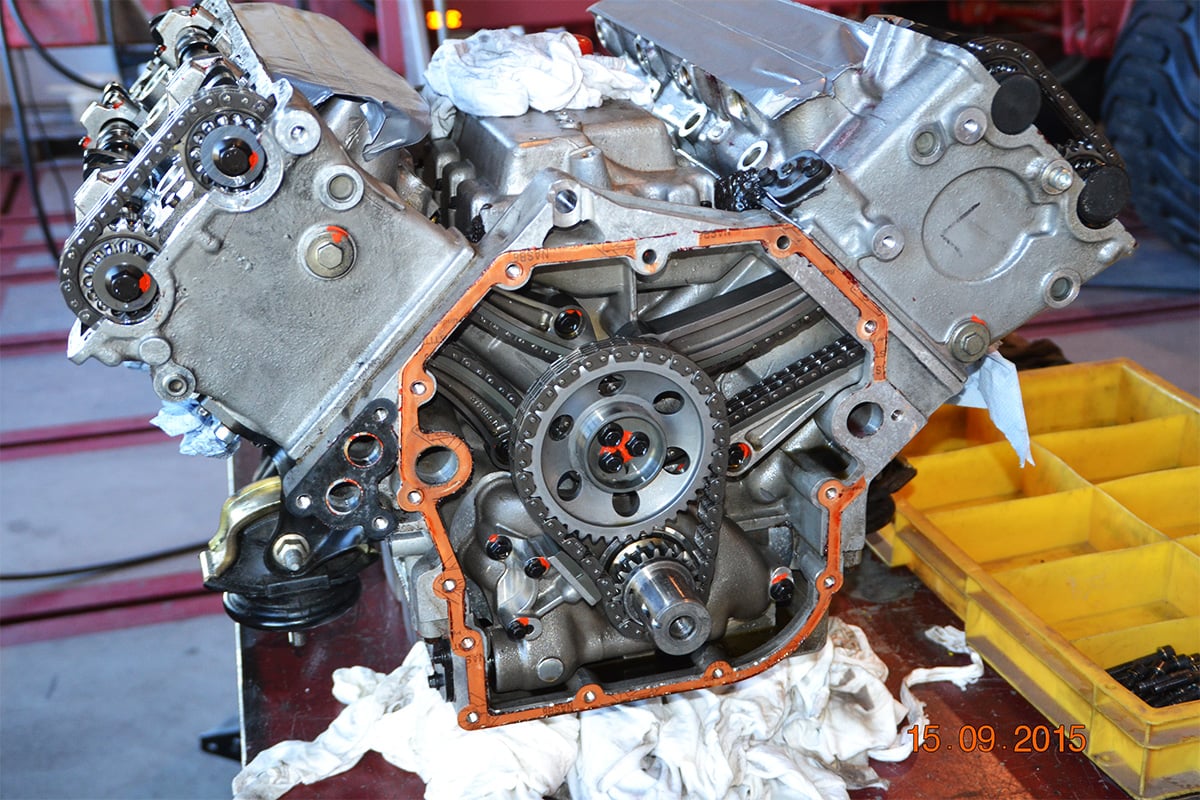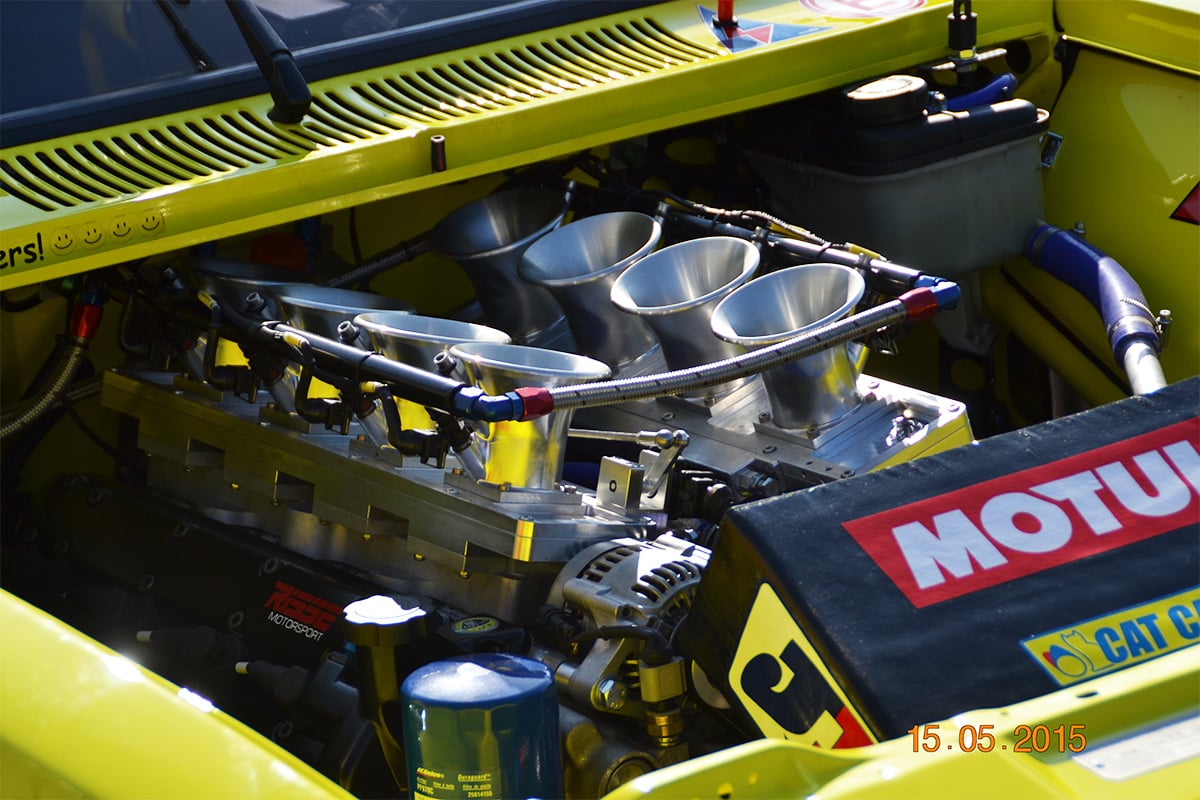Hill climb racing isn’t as popular in the USA as it is in other countries, but one in-car view from Norbert Vornholt’s screamer is enough to get you begging for more.
The car and driver are not the only things riding the edge either. The engines are spun to extremes as well.
According to Vornholt, “More power in top engine speeds and less torque in low revs are more drivable for us at the hill climb races.” His Lotus inspired LT-5 engine currently spins 8,000 RPM during competition, and still begs for more. 10,000 RPMs are in the near future!
Norbert Vornholt's '76 Opel Kadett C-coupe. The hill climb racer is powered by a LT-5 from a '90 Vette built by Risse Motorsport.
“The project started in 2012 with the tear down of a wrecked 1990 Corvette ZR1,” explains Vornholt. “Onto the base frame of that ZR1 we put the hull of a 1976 Opel Kadett C Coupe. 4,500 hours later we finished our first year of racing at German and International hill climbs.” Seven time national hill climb series champion Holger Hovemann pilots the car.
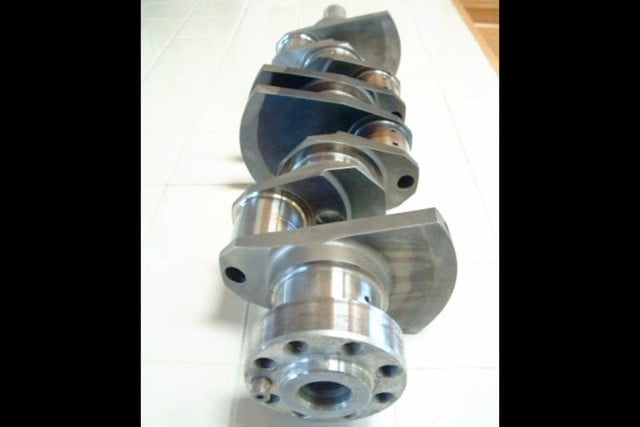
A flat-plane crank, shown here, has the rod throws spaced at 180 degrees. Typical V-8s have a 90 degree spread.
The LT-5 engine was developed by Lotus for the Corvette C4 ZR1 starting in 1990. While the standard 4.400-inch bore spacing and 9.030-inch deck height remained unchanged from previous small blocks, smaller bores and a longer stroke were used to achieve 350 cubic-inches. The aluminum block features wet, Nikasil-coated cylinder liners with a 3.900-inch hole for the pistons.
Vornholt’s engine, built by Risse Motorsport, ran the stock 3.660-inch stroke crank. Next season, the team will drop in a flat-plane crankshaft from Moldex Crankshaft.
“This year we used the normal cross-plane crank you see in the pictures. Stock crank but a little lightened and balanced to the lower rod and piston weight. For next year we are switching over to a flat-plane crank, of course with new cams and other firing order,” explains Vornholt.
Also known as a 180 degree crank, the flat-plane features throws that are spread 180 degrees apart. Typical V-8 crankshafts have a throw every 90 degrees. In addition to the flat-plane design creating a coveted exhaust roar, spreading the exhaust pulses out allows for more efficient exhaust scavenging and results in more power when the engine is optimized.
Overall weight crankshaft is significantly reduced due to the use of smaller counterweights in the flat-plane configuration. This provides quick revving and a higher RPM ceiling, although internal engine changes are required to deal with the vibrations the flat-plane crank introduces in a V-8 application. One current V-8 engine using a flat-plane crankshaft is the new 2015-16 GT350 Ford Mustang, which can be read about here.
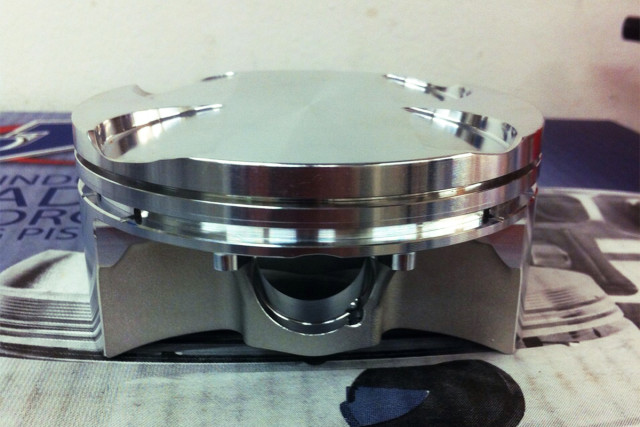
The two-ring design piston from JE allows for shorter compression heights and less frictional horsepower loss.
A set of H-beam connecting rods from Auto Verdi were used with custom JE pistons. A two-ring piston design provides a shorter compression height and allows a longer rod to be used. The H-beam rods stretch out to 155.4 mm; this length is 9.6 mm longer than the stock dimension. With only one compression ring, frictional power loss is also minimized, providing additional power to the flywheel. A dry sump oiling system is used to lubricate the engine. Auto Verdi also supplied the 5-stage oil pump.
The stock cylinder heads feature hand-ported runners and optimized chambers completed by Otto Adamski of Risse Motorsport. Combined with the flat top pistons and a 1.3 mm head gasket from Cometic, the chamber size provides the engine with a 13.8:1 compression ratio. Two 39 mm intake valves and 35 mm exhaust valves control the air/fuel mixture in and out of the chambers.
(Top Left) Nitrided camshafts waiting to be installed on the cylinder heads. (Top Right) The cam lobes ride directly on the valve tappets. (Bottom Left) The long block is assembled. Three drive chains keep the crank and cams timed. (Bottom Right) Closeup of the port work done by Otto Adamski.
High strength, custom ground cams were supplied by Cat Cams for the DOHC engine. The nitrided lobes push the exhaust valves 13.25 mm off their seats. Intake valves lift slightly higher at 13.75 mm. Duration, measured at 1 mm lift, is 261 degrees for the intake and 252 for the exhaust.
Eight individual throttle bodies sit on top of a custom built intake manifold. The entire setup was built by Irmler Motorsports. The 56 mm throttle bodies feature flat-slide throttle plates rather than the conventional rotating plates. Flat-slides eliminate the spindle that restricts airflow through the throttle body.
On the exhaust side, headers from OBX Racing Sports carry the spent mixture into an X-pipe and through 3-inch stainless exhaust pipes. Two race catalytic converters are also used.
A fuel management system from Kronenburg Management Systems controls dual FSE fuel pumps that supply 4-bar fuel pressure to the eight 1100 cc fuel injectors. The KMS system has integrated ignition control, an internal data logger, and closed loop, wide-band Lambda sensors on both banks.
Individual 56mm throttle bodies sit atop the LT-5. The setup was custom built by Irmler Motorsports and feature flat-slide throttle plates.
A twin-disc racing clutch from Sachs Performance is attached to a chrome moly flywheel. Overall weight for the flywheel and clutch combined is less than 20 pounds. This lightweight combination is all part of an effort to keep the RPM climbing efficiently. The engine currently produces 650 hp at 8,000 rpm — but this small block still wants more. Vornholt is pushing for more RPM in 2016.
Vornholt says, “The goal for the 9000-plus is that we have at 8,000 [RPM] a full 650-Nm torque and the power curve is still rising. We tried 9,000 on the dyno and it still rises with power. But we have to change a lot of internals to keep 9,000 safe. So everything we put in now is safe to 10,000.”
With the roar of 10,000 rpm and a flat-plane crank, this hill climbing machine will be an impressive sight to see in the seasons to come!



